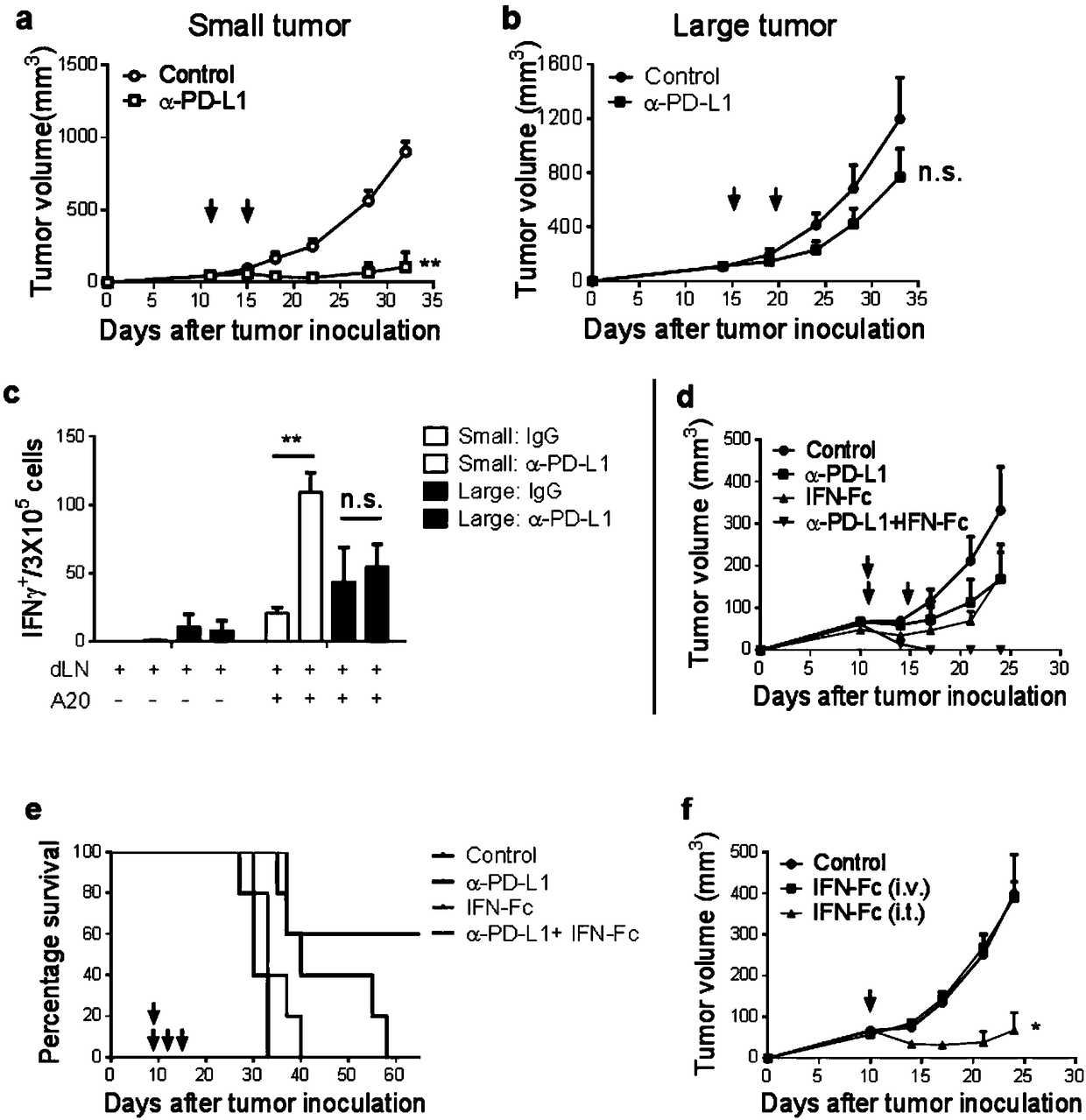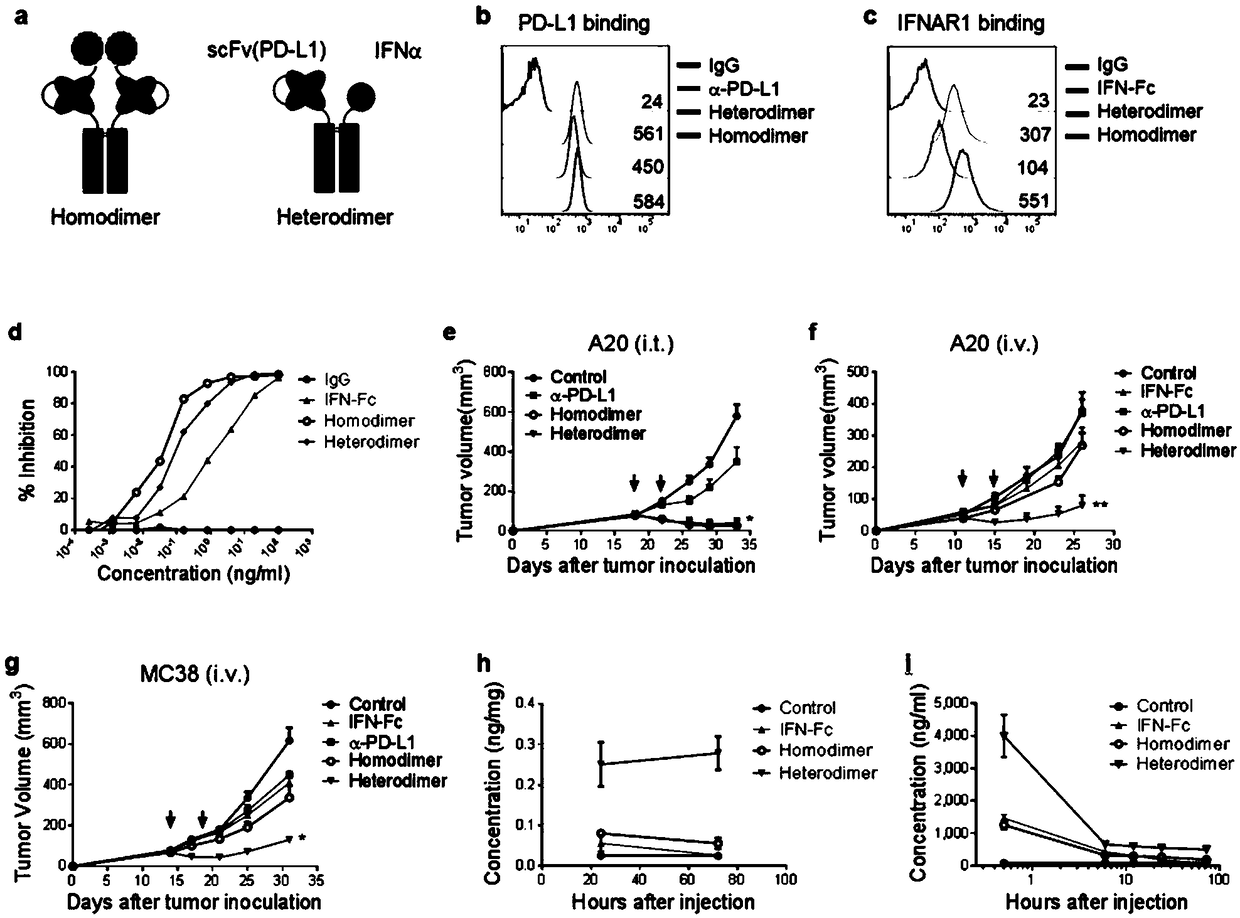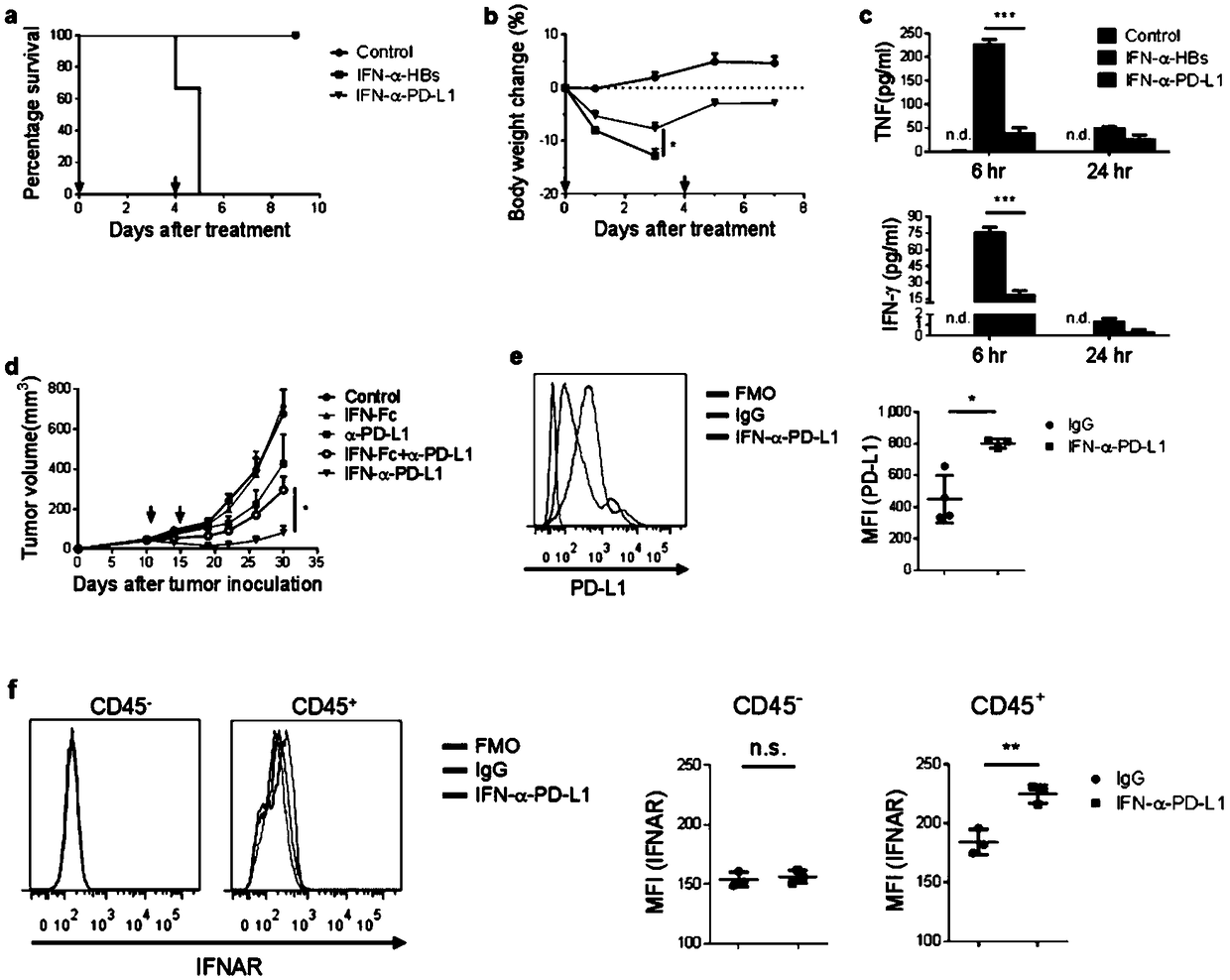Fusion protein of IFN and anti-PD-L1 antibody and application thereof
A PD-L1, fusion protein technology, applied in the fields of genetic engineering and biomedical medicine, can solve the problems of side effects of patients and reduce the treatment effect.
- Summary
- Abstract
- Description
- Claims
- Application Information
AI Technical Summary
Problems solved by technology
Method used
Image
Examples
preparation example Construction
[0075] During the preparation of the heterodimer, different type I interferons were also used to prepare the second polypeptide mIFNb-Fc (encoding nucleic acid as shown in SEQ ID NO.7), hIFNα2-Fc (encoding nucleic acid as shown in SEQ ID NO.7) NO.8), hIFNb-Fc (encoding nucleic acid as shown in SEQ ID NO.9), mIFNγ-Fc (encoding nucleic acid as shown in SEQ ID NO.10), the resulting heterodimers all have relatively good effect on inhibiting tumor cell proliferation; among the above-mentioned heterodimer fusion proteins, IFNα-Fc has a better effect; and the heterodimer fusion protein composed of mIFNα4-Fc and Anti-PD-L1 has the best effect Excellent, the relevant detailed comparison data are not shown here.
[0076] Homologous dimer: The mouse IFN-α4 C-terminus is connected to the N-terminal of ScFv(PD-L1)-Fc to obtain the first polypeptide and the second polypeptide of the homologous dimer fusion protein (SEQ ID NO. 3). Its nucleotide sequence (SEQ ID NO.6) was cloned into the p...
Embodiment 1
[0091] Example 1: Topical administration of type I IFN overcomes tumor resistance to PD-1 / PD-L1 blockade therapy
[0092] A recent study showed that the clinical response of patients treated with immune checkpoint blockade correlated with T cell activation status and tumor burden. Consistent with this, the present invention found that anti-PD-L1 antibody was effective in small A20 tumors (3 ) showed effective tumor control ( figure 1 a). On the contrary, when the tumor becomes larger (>100mm 3 ), the antitumor effect decreased significantly ( figure 1 b). Advanced tumors may have developed multiple mechanisms to suppress antitumor immune responses. Indeed, when comparing T cell activation in small versus large tumors, it was observed that PD-L1 blockade induced robust T cell activation in small tumors, whereas the same treatment had limited effects on T cells in advanced tumors ( figure 1c), The data suggest that insufficient T cell activation may be the reason advance...
Embodiment 2
[0095] Example 2: Construction of IFN-anti-PD-L1 fusion protein for specific delivery of IFN to tumor tissue
[0096] Most patients are unable to implement the local application of interferon to the tumor. Furthermore, systemic delivery of type I IFNs often has limited antitumor activity and severe side effects. Targeting antibodies with cytokines has proven to be an effective strategy for the local delivery of immune modulatory molecules. However, identifying tumor-specific molecules for therapeutic targeting is quite difficult. PD-L1 has been reported to be highly expressed in tumor tissues. Recent studies have shown that anti-PD-L1 antibodies specifically accumulate in PD-L1-positive tumor tissues. Moreover, in addition to their antitumor functions, IFNs strongly induce PD-L1 expression, thereby suppressing T cell responses to tumors. In order to overcome this counteracting effect and realize mutual promotion of immune (re)activation in TME, the present invention propos...
PUM
 Login to View More
Login to View More Abstract
Description
Claims
Application Information
 Login to View More
Login to View More - R&D
- Intellectual Property
- Life Sciences
- Materials
- Tech Scout
- Unparalleled Data Quality
- Higher Quality Content
- 60% Fewer Hallucinations
Browse by: Latest US Patents, China's latest patents, Technical Efficacy Thesaurus, Application Domain, Technology Topic, Popular Technical Reports.
© 2025 PatSnap. All rights reserved.Legal|Privacy policy|Modern Slavery Act Transparency Statement|Sitemap|About US| Contact US: help@patsnap.com



